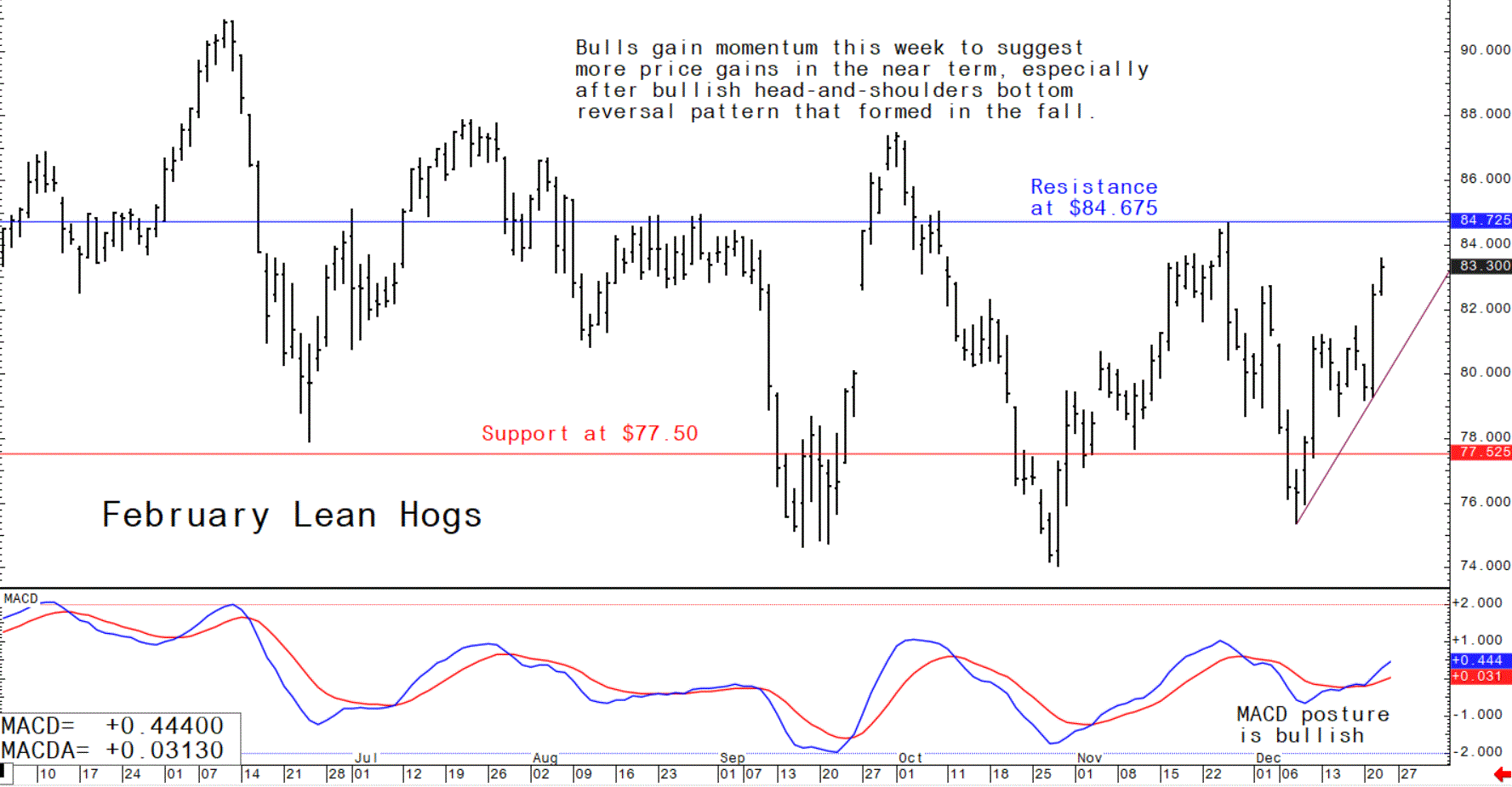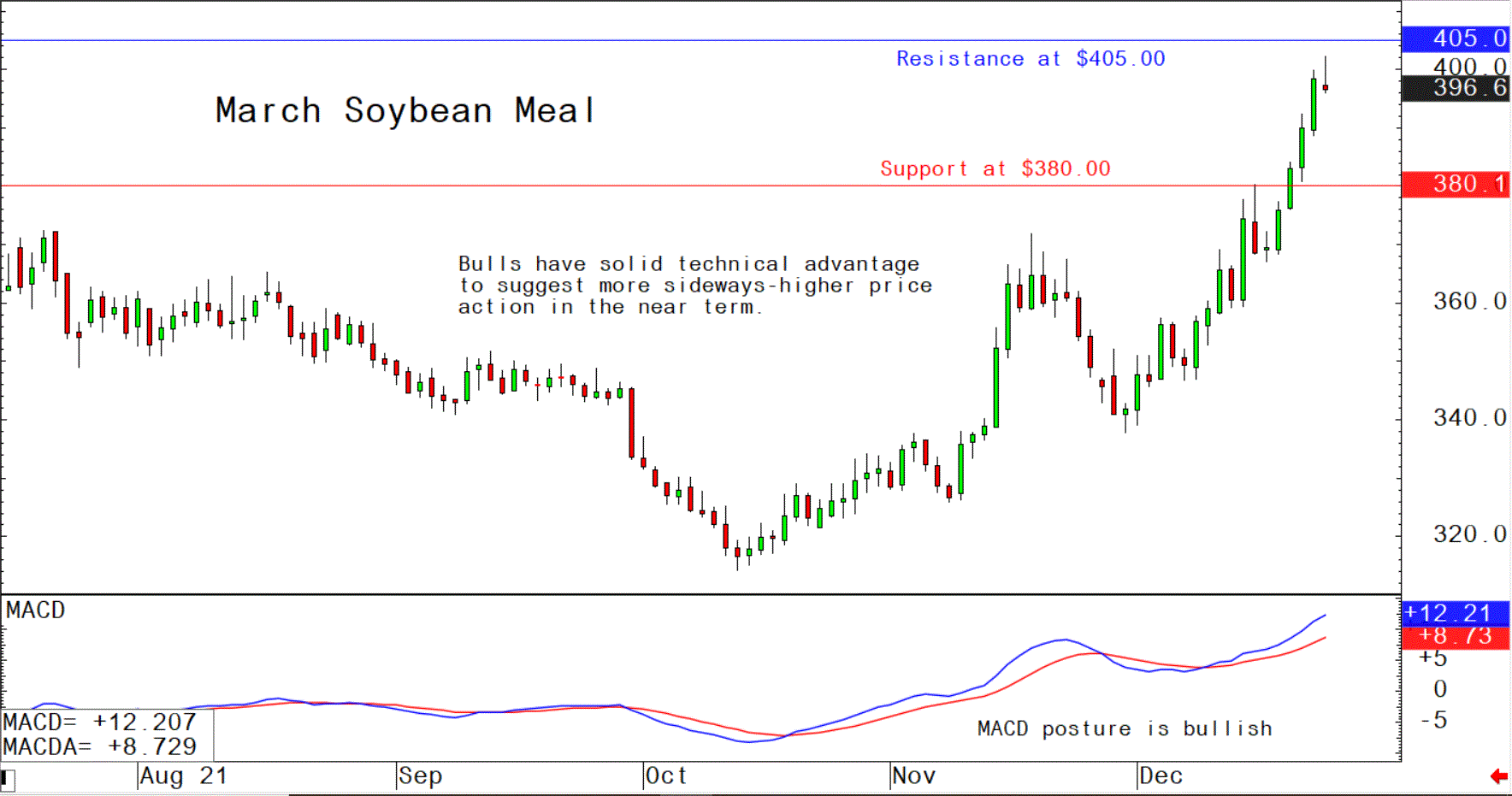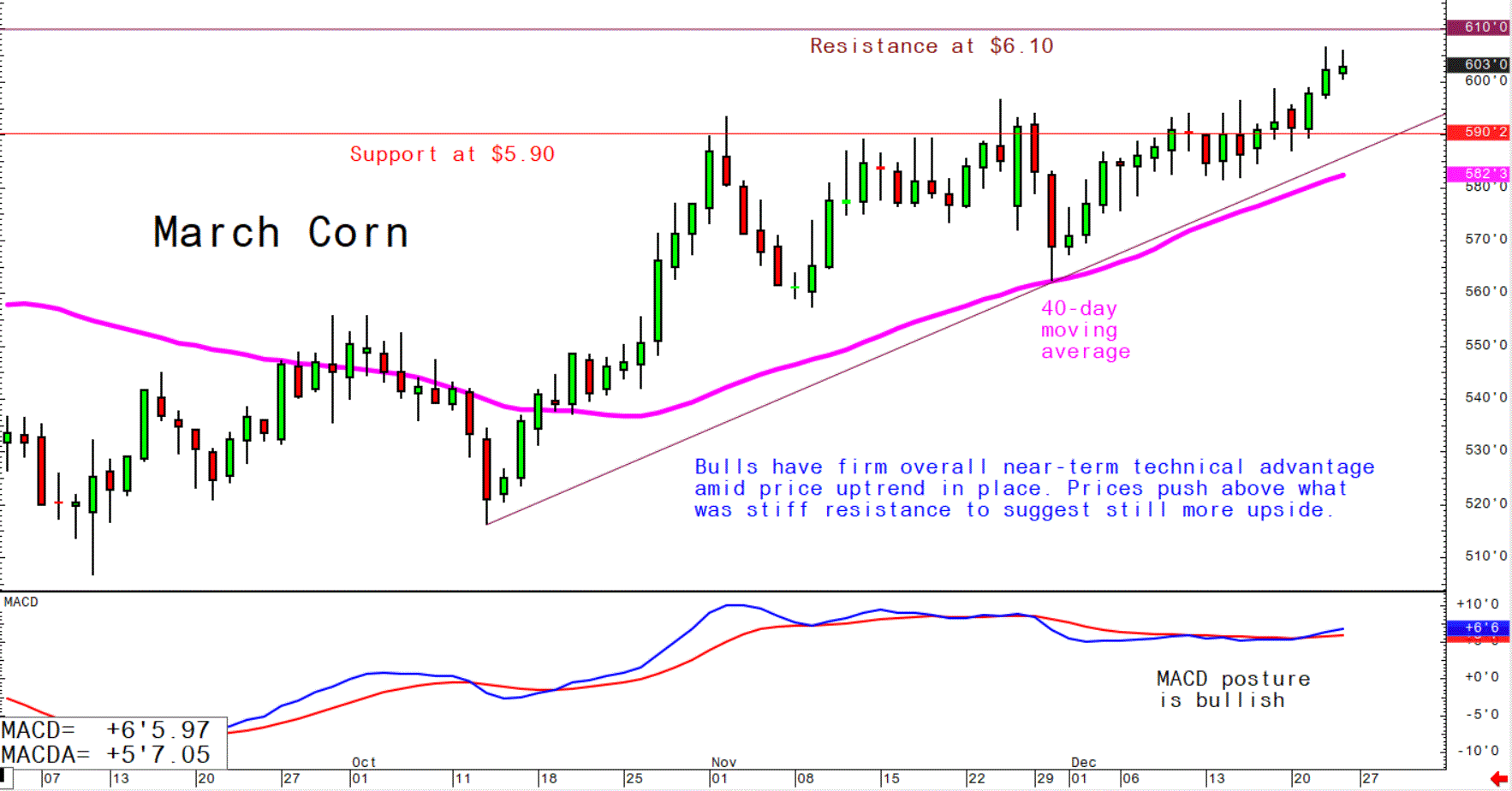



Pig outlook: Lean hog bulls show resilience this week
USDA’s Hogs and Pigs Report Thursday afternoon is expected to show contraction in US hog numbers.All hogs and pigs as of Dec. 1 are expected to total 74.594 million head, down 2.9% from the same date a year earlier, based on a Reuters survey of analysts. The number of hogs kept for breeding, an indicator or expansion or contraction, is expected to rise 0.1%. The number of hogs kept for marketing is expected to decline 3.1%.
Latest USDA and other news regarding the global pork industry
US pork export sales a bit disappointing in latest week
USDA’s weekly export sales report showed US pork net sales of 28,800 MT for 2021 were down 8 percent from the previous week, but up 5 percent from the prior 4-week average. Increases primarily for Mexico (14,000 MT, including decreases of 700 MT), South Korea (7,100 MT, including decreases of 600 MT), Japan (3,800 MT, including decreases of 2,300 MT), Canada (1,600 MT, including decreases of 400 MT), and Nicaragua (900 MT), were offset by reductions for China (300 MT), Australia (200 MT), and Chile (100 MT). Net sales of 7,000 MT for 2022 were primarily for Japan (2,800 MT), Mexico (1,600 MT), Canada (1,600 MT), Colombia (1,300 MT), and the Philippines (600 MT), were offset by reductions for South Korea (2,300 MT). Exports of 32,000 MT were up 6 percent from the previous week, but down 1 percent from the prior 4-week average. The destinations were primarily to Mexico (14,500 MT), Japan (5,100 MT), China (4,500 MT), South Korea (2,000 MT), and Canada (1,700 MT).
US pork group issues report on pork prices
In a report released Tuesday on US retail pork prices, economists with Iowa State University, North Carolina State University and the National Pork Producers Council (NPPC) found that pork prices, not industry profits, are rising. Prices are rising due to increased transportation costs, supply bottlenecks and delays and increased labor costs throughout the pork chain, the report said. Those factors were either caused or exacerbated by the Covid-19 pandemic, Iowa State’s Dermot Hayes, N.C. State’s Barry Goodwin and NPPC’s Holly Cook said.
Food inflation to rise in coming months: USDA
Overall food price inflation forecasts held steady with month-ago levels, said USDA in its latest food price report. However, USDA continues to forecast food price inflation increases for various grocery store items for 2021, but so far has not altered their outlook for all foods, grocery store and restaurant prices for 2021 or 2022.
For all food prices in 2021, USDA expects the increase to be from 3% to 4%, a level of food price inflation that they have forecast since August. For grocery store prices, USDA expects them to rise 2.5% to 3.5% from 2020, an outlook which has not changed since August. For restaurant prices, USDA expects them to increase 4% to 5%, the same for both November and December forecasts.
For 2022, USDA still expects higher prices for consumers compared with 2021, but the rate of increase is seen easing. For all food prices, they are seen up 2% to 3% in 2022 from 2021 levels, while grocery store prices are expected to rise 1.5% to 2.5% versus 2021 and restaurant prices are looked to increase 3% to 4%. All of these forecast levels for 2022 are steady with the marks USDA has forecast since July.
The food-at-home (grocery store or supermarket) CPI increased 0.3% from October 2021 to November 2021 and was 6.4% higher than November 2020. In 2021 thus far compared with 2020, grocery store prices have increased 3.1% percent and restaurant prices have increased 4.2%. The CPI for all food has increased an average of 3.6%. Upward shifts continue in several meat categories. For 2021, USDA now looks for meat, poultry and fish prices combined to rise 6% to 7% compared with 2020, marking the eighth month in a row USDA has raised this forecast level. At this point in 2020, USDA expected meat, poultry and fish prices to be down 0.5% to up 0.5%.
For 2022, USDA sees meat, poultry and fish prices rising 2% to 3%. Within that category, USDA expects prices for meats at the grocery store will have increased 7% to 8% in 2021 compared with 2020. Similarly, this is the eighth monthly increase in forecast meat prices which stood at a forecast level of down 1.5% to up 1.5% in December 2020.
Beef and veal prices in 2021 are now expected to have risen 9% to 10% compared with 2020, a tenth straight monthly increase. In December 2020, USDA expected beef and veal prices to fall from 2.5% to 1.5%.
Pork prices are forecast to have increased 8% to 9% in 2021 compared with 2020, a ninth straight monthly increase. In December 2020, USDA expected pork prices to be down 0.5% to up 0.5%.
USDA’s explanation for the higher prices for meats has not changed compared with their month-ago remarks. “Prices have been driven up by strong domestic and international demand, labor shortages, supply chain disruptions, and high feed and other input costs,” USDA said. “Concentration and capacity constraints within the meat industry could also affect prices.”
China’s pork imports plunged in November
China imported 200,000 metric tons (MT) of pork in November, the same amount as October but down 38.7% from last year. Through the first 11 months of this year, Chinese pork imports at 3.54 million MT fell 10.3% from the same period last year.
The next week’s likely high-low price trading ranges:
February lean hog futures--$81.00 to $86.00 and with a higher bias
March soybean meal futures--$380.00 to $410.00, and with a sideways bias
March corn futures--$5.90 to $.610 and a sideways bias
Latest analytical daily charts lean hog, soybean meal and corn futures










